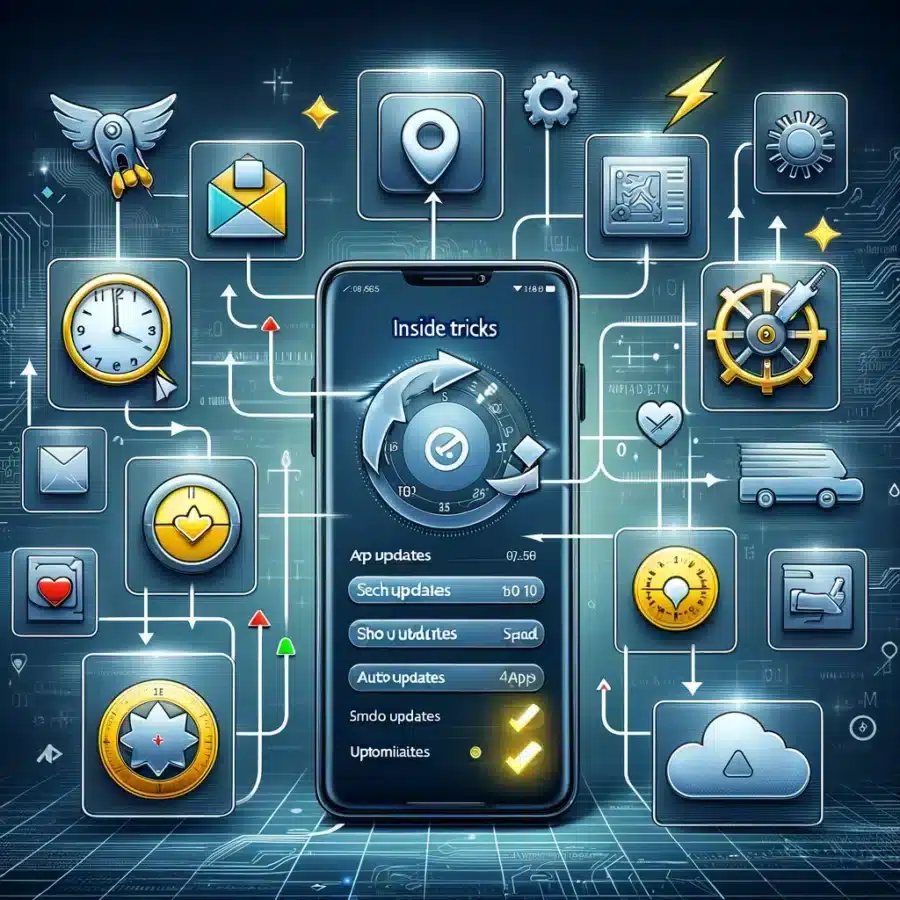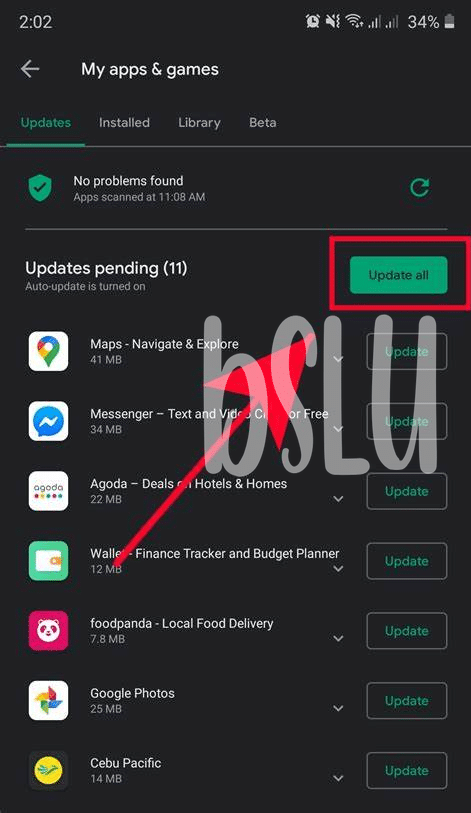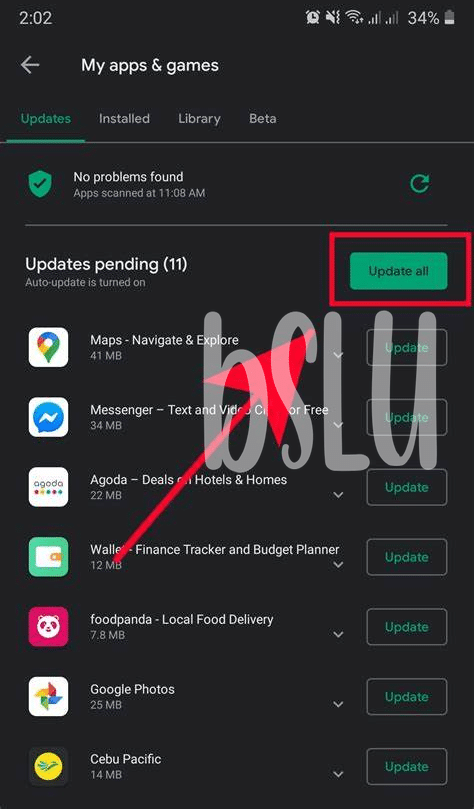
- 🚀 Embrace Automation for Tedious Update Tasks
- 🛠 Utilize Modular Architecture for Easier Changes
- 🗓 Schedule Regular Check-ins and Reflective Sessions
- 📊 Integrate User Feedback for Relevant Updates
- 🌐 Leverage Beta Testing for Real-world Insights
- 📝 Document Everything for a Smooth Transition
Table of Contents
Toggle🚀 Embrace Automation for Tedious Update Tasks
In the high-octane world of app development, where deadlines loom and user demands are ever-evolving, harnessing the power of automation emerges as a game-changer. Imagine the tedious hours spent on mundane update tasks are now claimed back, replaced by the silent, efficient work of scripts and tools that never tire 🛠️. Picture this: Your deployment pipeline is a well-oiled machine, where code merges trigger a domino effect, precisely executing build processes, running tests, and pushing updates to your staging, then production environments without a hitch. This not only fast-tracks the time-to-market but also drastically reduces the likelihood of human error – a stray comma here, a misspelled variable there – relegated to folklore.
| Manual Tasks | Automated Equivalents |
|---|---|
| Code Merging | Automated Merge Tools |
| Testing | Continuous Integration Servers |
| Deployment | Automated Deployment Scripts |
| Monitoring | Real-time Alerting Systems |
Within this streamlined expanse, developers and product managers alike can redirect their focus towards innovation and enhancement, allowing apps to not only survive but thrive in the competitive digital ecosystem 🌐. The shift to automation is not a futuristic prophecy – it is the current chapter. And those who fail to adapt may find themselves sidelined, with their apps turning into relics of a time when manual processes were the norm and the flow of progress was constipated by avoidable errors.
🛠 Utilize Modular Architecture for Easier Changes
In the app development lifecycle, adaptability is paramount, and a well-implemented modular architecture can be a saving grace. By breaking down the application into discrete, interchangeable modules, developers can introduce changes swiftly and more efficiently. Consider it akin to a set of building blocks—each block can be replaced or enhanced without dismantling the entire structure. This approach not only simplifies the update cycle but also fosters an environment where teams can deploy patches or new features with precision and without hiccups, much like a well-oiled machine. Think of a scenario where you need to eliminate outdated components—much like when you’re looking to how to delete app on android; a modular framework allows you to excise the obsolete without affecting the rest of your ecosystem. Such foresight in design drastically reduces downtime and maintains the app’s integrity, ensuring a seamless user experience—even as the digital landscape inevitablly evolves.
🗓 Schedule Regular Check-ins and Reflective Sessions
In the bustling world of app development, the secret sauce to ensuring a consistent and high-quality user experience is often found in the rhythm of regular team updates and reflective sessions. 🤝 By committing to these structured meets, teams can weave through the complexities of project timelines with a clear focus on progression and pain points. Each session becomes a strategic pit stop, an opportunity to align on objectives, celebrate achievements, and adjust tactics as needed. Like skilled mechanics in a pit lane, developers and project managers can collaboratively tune the engine of their app to race towards the finish line of the next release with precision and unity.
Adopting a reflective lens 🧐 during these check-ins is crucial. It allows teams to not only evaluate what has occured, but also to dissect why certain decisions were made, and how future iterations can benefit from past learnings. This ongoing cycle of evaluation and adaptation fuels continuous improvement and paves the way for a more efficient update process. It fortifies the team against potential roadblocks and ensures that each member is not just moving forward, but also moving smarter.
📊 Integrate User Feedback for Relevant Updates
In the digital age, where user preferences evolve at breakneck speeds, app developers must stay on their toes to remain relevant. A key tactic is to closely harness the wisdom of the crowd – that is, the very users who interact with your application daily. 🧐 Developers should actively seek out and prioritize this feedback, recognizing that these insights are often invaluable in steering the app towards success. Rather than guessing what changes might enhance their experience, engaging directly with users can reveal precise pain points and desired features, tailoring updates to what genuinely matters.
While it’s easy to get tangled up in technical details, remembering the human element in app development can be enlightening. For instance, if someone struggles to figure out how to delete an app on android, addressing such usability issues can drastically improve user satisfaction. As part of the process, developers should establish straightforward channels for users to share their thoughts and impliment those suggestions into the development cycle 💡. This not only streamlines the update process but also fosters a loyal user base, invested in the app’s growth and success.
🌐 Leverage Beta Testing for Real-world Insights
Peering into the heart of user interactions, beta testing emerges as the alchemist’s stone, transmuting raw, untested features into polished, user-centric enhancements. It’s a journey through the wilderness of real-time engagement, where every click, swipe, and tap is observed like stars in the night sky for navigation. The savvy app developer harnesses this power, inviting a crew of pioneers—the beta testers—to embark on this adventure. Their mission is clear: to explore the untamed terrains of new features, hunting for bugs that lurk in the code and suggesting improvements that resonate with the beating heart of the user base.
These digital explorers are not just testers; they’re the cartographers mapping the user experience landscape. Their feedback is the compass that guides the development ship through treacherous waters, avoiding the perceived reefs of user frustration and steering towards the promised land of seamless interactivity. 🛠 By integrating these insights, developers can recalibrate their approach, ensuring that the app’s evolution is a reflection of its users’ desires and not just the theoretical musings from within the echo chamber of the development team.
Beta testers are invaluable allies in this crusade🛡, their feedback gold dust that, when sieved through the mesh of analytics, reveals the precious nuggets of insight that drive a successful app forward. And so, it is with the wisdom of inclusivity that one should tread this path, pausing occasionally to test the winds of change and adjust the sails accordingly.
| Benefits of Effective Beta Testing | |
|---|---|
| 🐛 Bug Discovery | Uncover critical issues before full release |
| 💡 Feature Validation | Test new ideas with a live audience |
| 🔍 User Engagement | Gather direct input from your target demographic |
| 🛠 Quality Assurance | Enhance reliability and performance based on feedback |
Yet, ambiguity is not welcome on this quest—clear documentation and actionable feedback are the tools to forge a path forward. As development teams embrace this iterative pilgrimage, guided by the north star of real-world usage, they can acheive the mythical equilibrium between innovation and user satisfaction—a state of app nirvana so often pursued, yet rarely captured in the wild.
📝 Document Everything for a Smooth Transition
When embarking on the digital seas of app development, smart navigation through the waters of transition is paramount. It’s akin to weaving an intricate tapestry: one thread out of place, and the whole design suffers. By meticulously chronicling each update’s odyssey—from genesis through to deployment—you ensure that not a single detail is lost in the depths. This historical ledger becomes a treasure map for developers, a guiding star for navigating the turbulent updates that may lay ahead. 🌟
Imagine a new programmer joining the crew; with well-documented logs, they are inducted into the voyage with ease, not left adrift. The logbook serves as a universal language, breaking down barriers between code and coder—it’s the Rosetta Stone of your app’s evolution. As the process unfolds across the calendar, each entry in this chronicle is a stepping stone towards a future where updates sail smoothly from dock to device, ensuring your fleet remains robust and ready for the next challenge that the tech tides may bring. 🛥️
Cast off the anchors of confusion with diligent records—although they might seem an exhaustive endeavour, they are the lifebuoys that will keep your app afloat in the long run. The right documentation acts as a lighthouse, offering a beacon of clarity throughout your app’s journey, warding off the potential for those rogue waves of miscommunication that can lead to unforeseen crashes against the rocky shores of software updates. Sail ahead; your map is drawn, your logbook full. The safe harbour of a successful update awaits.




